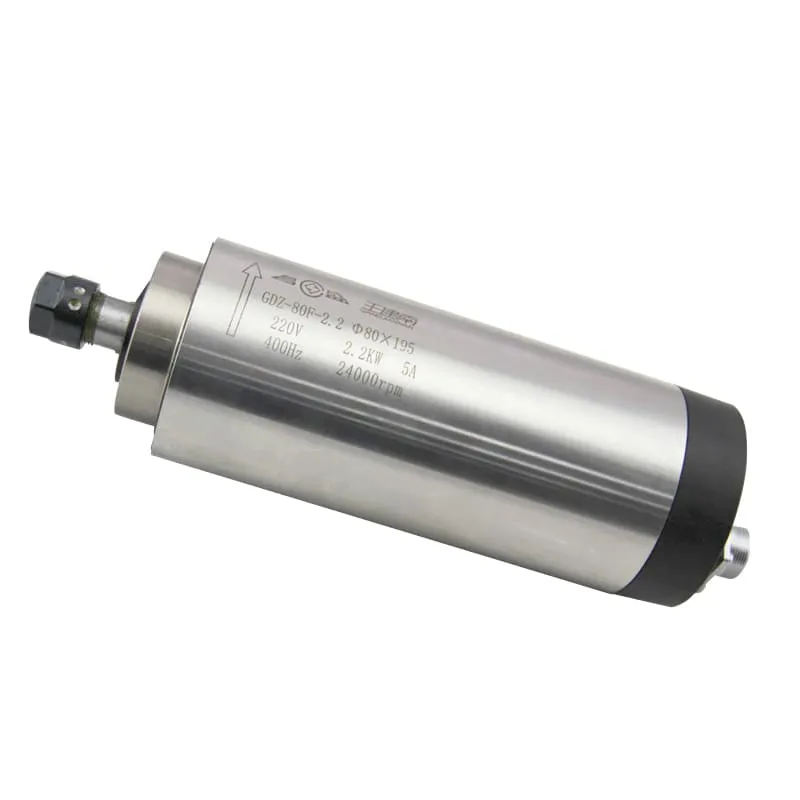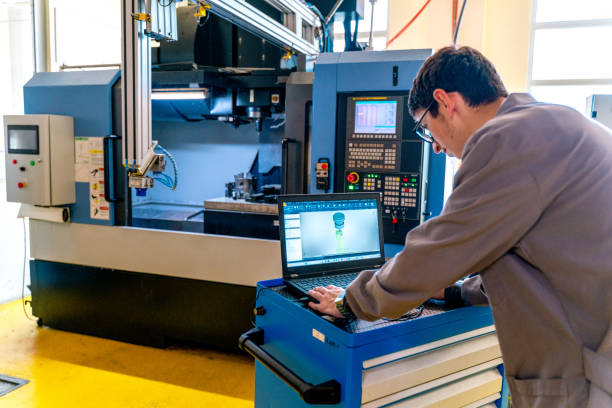Can SketchUp Be Used for CNC?
SketchUp, a popular 3D modeling software, has gained attention in the CNC (Computer Numerical Control) community. This comprehensive guide explores the potential use of SketchUp for CNC applications, examining its capabilities, limitations, and best practices.
Understanding SketchUp and CNC
Before delving into compatibility, let’s clarify what SketchUp and CNC are:
What is SketchUp?
SketchUp is a 3D modeling software known for its user-friendly interface and versatility. It’s widely used in architecture, interior design, and woodworking for creating 3D models and designs.
What is CNC?
CNC (Computer Numerical Control) refers to the automated control of machining tools using computers. CNC machines, including routers and milling machines, can create precise cuts and shapes based on digital designs.

A typical CNC router with a spindle motor
SketchUp’s Compatibility with CNC
While SketchUp wasn’t specifically designed for CNC, it can be used in the CNC workflow with some additional steps and plugins. Here’s how SketchUp can fit into the CNC process:
- 3D Modeling: SketchUp excels at creating 3D models, which is the first step in CNC manufacturing.
- 2D Drawings: SketchUp can generate 2D drawings from 3D models, which are often used in CNC routing.
- Plugins: Several plugins are available that can enhance SketchUp’s CNC capabilities, such as generating toolpaths and exporting G-code.
Limitations
However, there are some limitations to using SketchUp for CNC:
- No Native G-code Generation: SketchUp doesn’t natively generate G-code, the language CNC machines understand.
- Limited CAM Features: Computer-Aided Manufacturing (CAM) features, crucial for CNC, are not built into SketchUp.
- Precision Issues: SketchUp may not offer the level of precision required for some complex CNC projects.
Using SketchUp in the CNC Workflow
Despite its limitations, SketchUp can be integrated into a CNC workflow:
- Design in SketchUp: Create your 3D model in SketchUp.
- Export to CAM Software: Export your design to dedicated CAM software for toolpath generation.
- Use Plugins: Utilize SketchUp plugins like Phlatboyz or SketchUcam for basic CNC operations.
- 2D Export: For simple projects, export 2D drawings from SketchUp for use in CNC software.
Plugins for Enhancing SketchUp’s CNC Capabilities
Several plugins can extend SketchUp’s functionality for CNC use:
- Phlatboyz: Generates toolpaths for 2D and 2.5D CNC routing.
- SketchUcam: Offers basic CAM features within SketchUp.
- CNC Plugins Bundle: A collection of tools for CNC-related tasks in SketchUp.
Considerations for CNC Setup
Whether using SketchUp or dedicated CNC software, proper machine setup is crucial:
- Spindle Selection: Choose the right spindle for your needs. The 2.2KW ER20 Air-Cooled Spindle is popular for many CNC applications.
- Cooling System: For intensive operations, consider air-cooled spindles like the 4.5KW ER32 Air-Cooled Spindle for consistent performance.
- Power Requirements: For larger projects, a more powerful option like the 3.5KW ER20 Air-Cooled Spindles might be necessary.
Best Practices for Using SketchUp with CNC
To maximize SketchUp’s utility in CNC projects:
- Keep It Simple: Start with simple designs and gradually increase complexity.
- Use Groups and Components: Organize your model for easier manipulation and export.
- Scale Accurately: Ensure your SketchUp model is scaled correctly for CNC production.
- Consider Material Thickness: Account for material thickness in your designs.
- Test Before Cutting: Always run a simulation or test cut before full production.
Comparing SketchUp to Dedicated CNC Software
Here’s how SketchUp compares to software designed specifically for CNC:
| Feature | SketchUp | Dedicated CNC Software |
|---|---|---|
| 3D Modeling | Excellent | Good to Excellent |
| Ease of Use | High | Moderate to High |
| G-code Generation | Via Plugins | Native |
| CAM Features | Limited | Comprehensive |
| Precision | Moderate | High |
| Cost | Lower | Generally Higher |
| Learning Curve | Gentle | Steeper |
FAQ
1. Can SketchUp directly control a CNC machine?
No, SketchUp cannot directly control CNC machines. You’ll need to export your design and use dedicated CNC control software.
2. What file formats should I use when exporting from SketchUp for CNC?
Common formats include DXF for 2D designs and STL for 3D models. The best format depends on your specific CNC software.
3. Is SketchUp accurate enough for precision CNC work?
While SketchUp can be used for many CNC projects, it may not offer the level of precision required for highly complex or industrial-grade work.
4. Do I need additional software along with SketchUp for CNC projects?
Yes, you’ll typically need CAM software to generate toolpaths and G-code, and control software to operate your CNC machine.
5. Can SketchUp handle curved surfaces for CNC routing?
SketchUp can create curved surfaces, but handling complex 3D curves for CNC may require additional plugins or export to more specialized software.
6. Is it worth learning SketchUp for CNC if I’m a beginner?
SketchUp can be a good starting point due to its ease of use. However, as you advance, you may need to learn more specialized CNC software.
Conclusion
SketchUp can be a valuable tool in the CNC workflow, especially for those already familiar with the software or working on relatively simple projects. Its user-friendly interface and 3D modeling capabilities make it an attractive option for conceptualizing and designing CNC projects.
However, for more complex CNC work, dedicated CAD/CAM software may be necessary. The choice between SketchUp and specialized CNC software depends on factors such as project complexity, required precision, and personal or organizational workflow preferences.
Ultimately, successful CNC production relies on a combination of good design practices, appropriate software tools, and quality hardware. Whether you choose to incorporate SketchUp into your CNC workflow or opt for dedicated CNC software, the key is to understand the strengths and limitations of your tools and to continually refine your skills and processes.
As CNC technology continues to evolve, staying informed about the latest software developments and machine capabilities will help you make the most of your CNC projects, whether you’re a hobbyist or a professional manufacturer.

